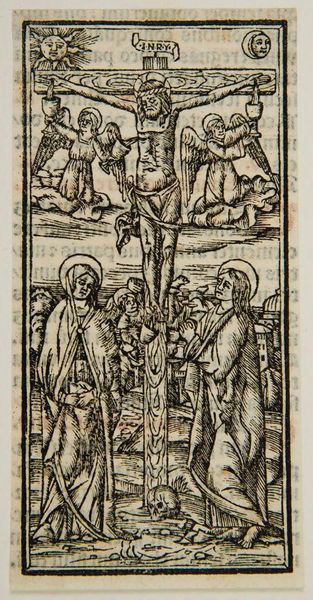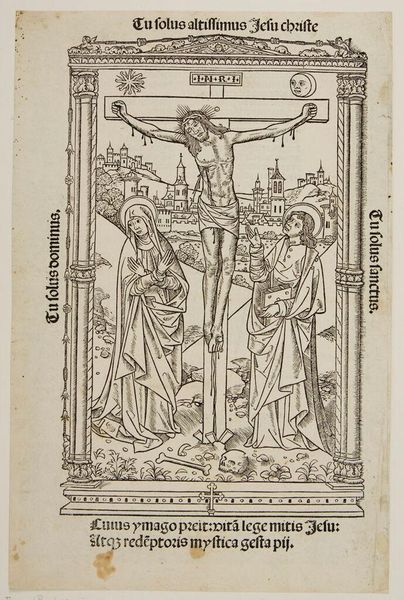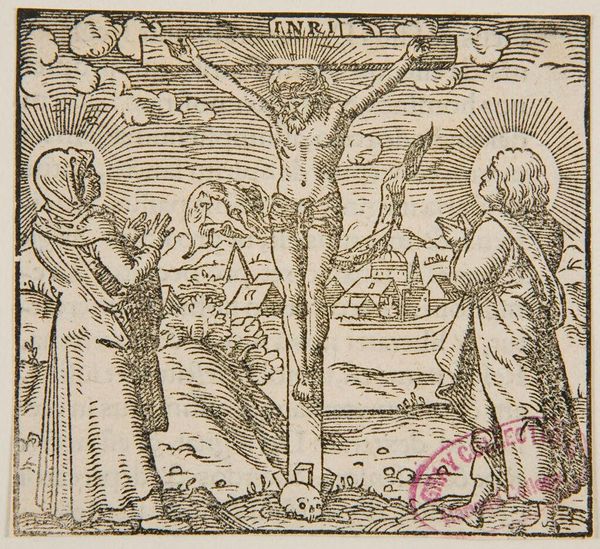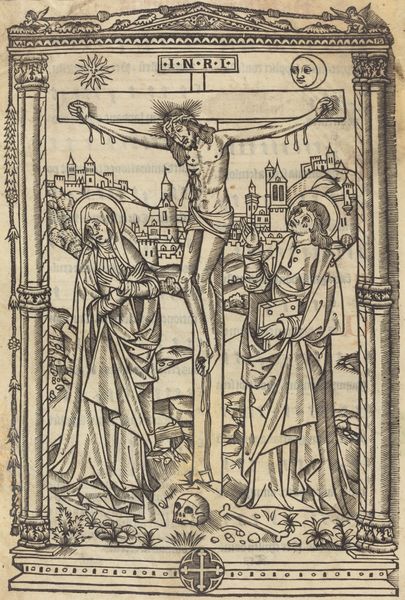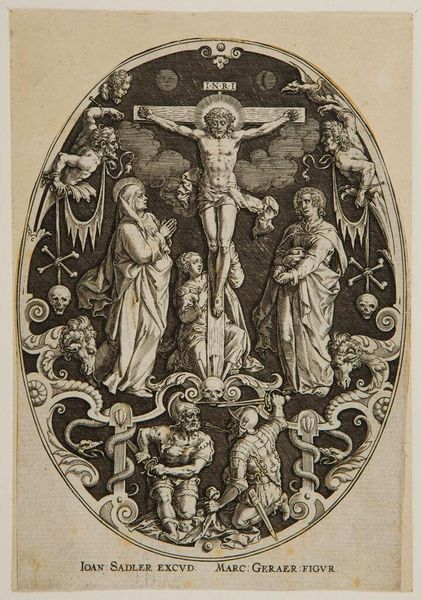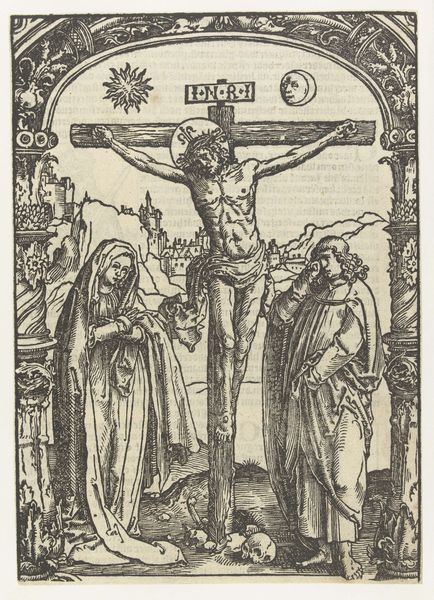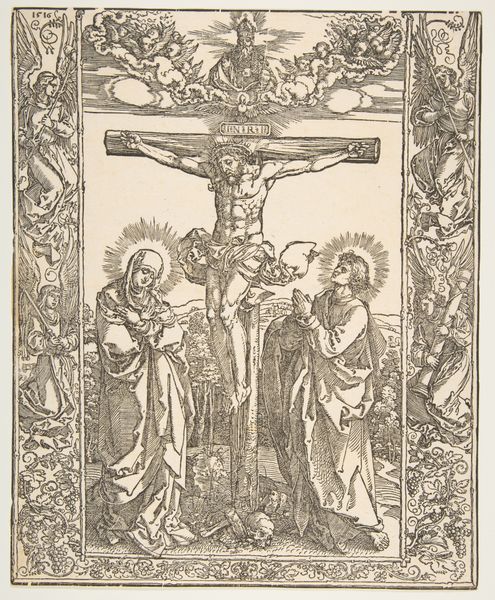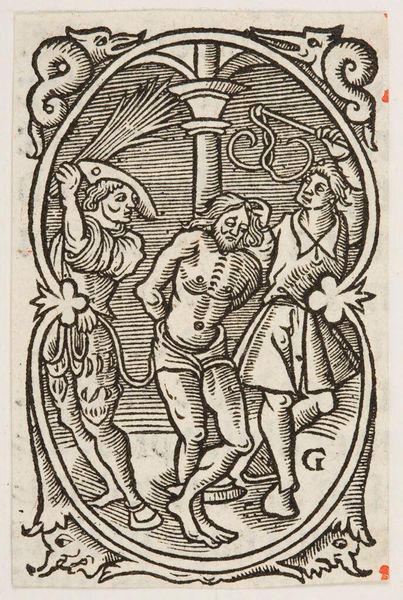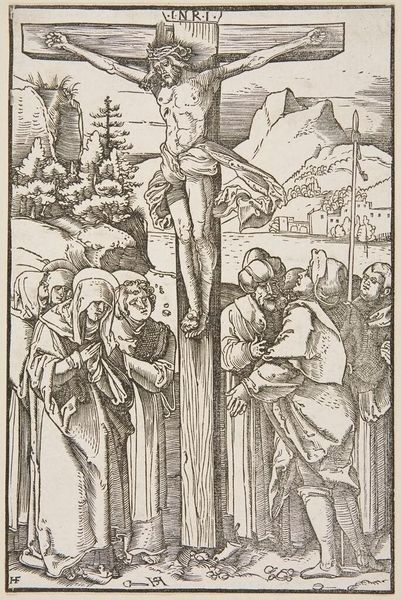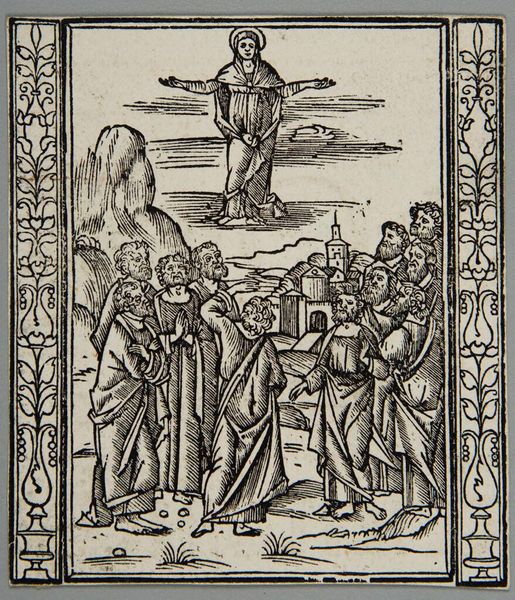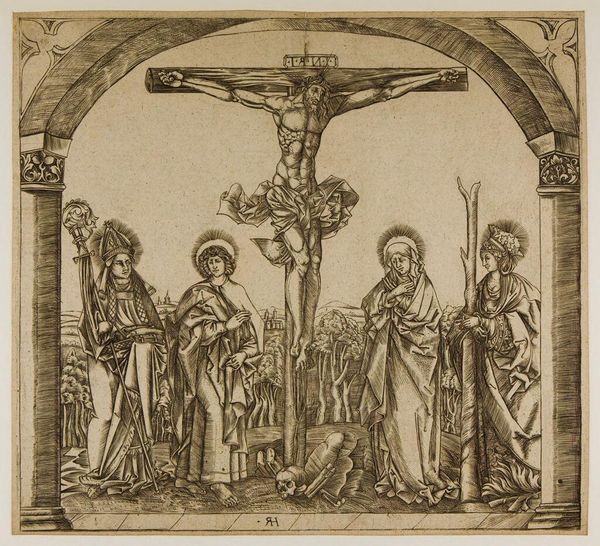
Copyright: CC0 1.0
Editor: Here we have an anonymous woodcut, "Crucifixion," housed at the Harvard Art Museums. It's incredibly detailed, with a stark black and white contrast. What strikes me is how the artist uses the frame to contain the scene. What's your take on its historical context? Curator: This piece likely served a devotional purpose, perhaps as an inexpensive print for personal use. The framing, as you noted, isn't just decorative; it reinforces the sacred space, separating it from the mundane. How does the symbolism of the skull at the base of the cross fit within this context? Editor: I imagine the skull is a memento mori, a reminder of mortality and the promise of salvation through Christ's sacrifice. Curator: Precisely. And think about the production and distribution of such prints. They democratized religious imagery, making it accessible beyond the elite circles. Editor: That’s fascinating. I never considered the social impact of inexpensive art. Curator: Exactly! It shaped popular piety and the visual landscape for a broad audience.
Comments
No comments
Be the first to comment and join the conversation on the ultimate creative platform.
